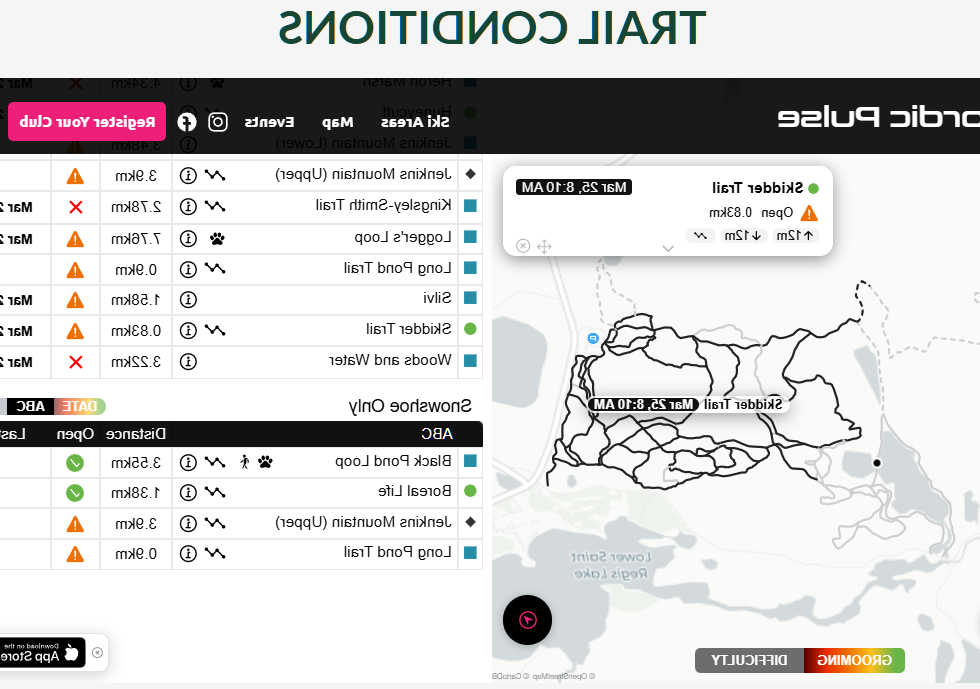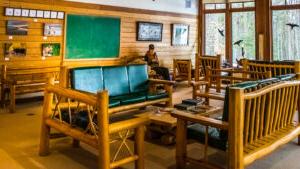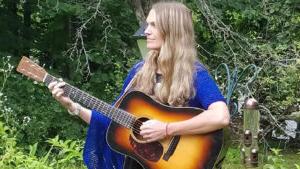The VIC—located in the heart of the Adirondack Park—is the Paul Smith’s College Visitor Interpretive Center offering unforgettable adventures through the region’s diverse ecosystems.
Explore scenic trails, discover wildlife, and learn about the Adirondacks through engaging programs.
- Guided adventures with our expert guides
- Wildlife viewing
- Educational programs for students, adults, and kids
- Heron Marsh Art Gallery featuring local artists’ work inspired by the Adirondacks
- Nature based workshops focused on the wonder of the region
- Cultural experiences such as concerts and lectures that showcase the region’s rich heritage
- Butterfly house to discover butterflies and moths in all stages of development
- Great Adirondack Birding Celebration, held annually in June
- 25-mile trail system including interpretive nature trails and boardwalks through wetland ecosystems
- Nordic competition trails and a biathlon range, catering to the Paul Smith’s College Nordic and Biathlon teams and the public

VIC
Paul Smith's College Visitor Interpretive Center
Winter Adventures
The VIC has three lean-tos on the property available for registered campers for a nominal fee. All are accessible via hiking trail or canoe. Permits and payment are required for use of the Long Pond and Black Pond lean-tos throughout the year.
- Available year-round
- Beautiful lake views
- Outhouses on-site
- Firewood provided
- Campers are required to follow the Principles of Leave No Trace, including minimizing impact and carrying out all trash.
- $35 per night
The lean-tos along the Heron Marsh Trail are day-use only and do not require pre-registration or permits.
Picnic Pavilion
Our Maple and Balsam Pavilions are ready for your next family reunion, staff picnic, or birthday party. Bring your food, drinks, and games, and we’ll provide the rest!
- 5 picnic tables
- 5 charcoal grills
- Large covered area
- Flat concrete patio
- Adjacent to parking area
- Fully accessible
- Call for pricing – 518-327-6241
Please note: there is no running water available directly at the pavilion
Amphitheatre
The VIC amphitheater can host live performances, lectures, presentations, and more.
- 50-person theater
- Fully accessible seating area
- Covered stage
- Beautiful backdrop
- Call for pricing – 518-327-6241
The Breck Chapin Memorial Native Species Butterfly House, featuring butterflies and moths in all stages of development. We are open from 10:00am to 4:00pm, seven days a week throughout the summer, weather permitting.
The Butterfly House near the front entrance of the Paul Smith’s College Visitor Interpretive Center.
Visitors can view native butterflies up close and learn about the life stages and migratory patterns of these colorful insects. Butterfly House volunteers are available to point out the species of butterflies in the house that day, provide information on the insect’s life cycle, and identify specific plants that are favored by each species. Inside the Butterfly House, there are nectar plants for food and host plants for egg-laying and caterpillar feeding. There are also touch boxes and information handouts on butterflies and moths. Outside the Butterfly House is the Frank Hutchins Butterfly Garden, a garden designed to attract butterflies and named to honor the late Frank Hutchins, a longtime supporter of the Paul Smith’s VIC.
Trail passes are required to ski and snowshoe the VIC trails.
Free to Paul Smith’s College students, staff, and faculty.
DAY PASSES
Under 5: Free
Ages 5-17: $10
Ages 18 and up: $20
Seniors 65+ or military $15
SEASON PASSES
Under 5: Free
Ages 5-17: $75
Ages 18 – 64: $150
Family (household members): $325
Seniors 65+ or military $125
Heron Marsh Gallery displays and sells art from regional and national artists.
Nature Trails
The Barnum Brook Trail is an interpretive nature trail designed to provide access to an Adirondack wetland and several different kinds of forest communities. The two overlooks provide exellent access to Heron Marsh, affording the opportunity to observe birds and marsh-dwelling mammals, such as North American River Otter. This well-marked, one-mile loop also features a series of identification markers on common Adirondack trees. Eleven species of trees native to the Adirondack Mountains are highlighted.
The surfaced trail— designed to be accessible to those who have difficulty walking—begins at the gazebo near the parking lot of the Visitor Center. Those taking a clockwise route should bear to the left at the intersection. The trail meanders through second-growth forest to two overlooks with good views of Heron Marsh and St. Regis Mountain. The path then follows Barnum Brook through a riparian woodland on a boardwalk. Use caution on the boardwalk, as it is apt to be slippery when wet. After crossing a fish barrier dam, you return to the gazebo through a stand of Eastern White Pines.
The walking is very easy, with a few slight grades and many benches to rest along the way. In the winter, this trail becomes a snowshoe trail. Follow the light blue trail markers.
The three-mile Heron Marsh Trail takes visitors through prime wildlife viewing areas. The path includes a variety of Adirondack habitats, including wetlands, hardwood forest, and mixed conifer-hardwood forest. The trail begins near the deck of the Paul Smiths VIC Building. The first part of the trail takes you down near Heron Marsh, with two viewing platforms and an elevated tower to observe marsh regulars, including Great Blue Heron and American Bittern. The trail continues around Heron Marsh, passing the Shingle Mill Falls dam, then passes through a typical Adirondack forest community of mixed conifers and hardwoods, leading to a 900-foot boardwalk across Heron Marsh and Barnum Brook. The path then winds upward through a hardwood forest. The walking is easy with a few small hills.
The Heron Marsh Trail provides opportunities to study a variety of plants which flourish in different Adirondack habitats. The marsh itself hosts a number of wetland plants which grow in the Adirondacks. These include floating plants, such as Yellow Pond Lily and White Water-lily. Both of these plants are anchored to the bottom by roots and have long stalks to leaves that float on the surface of the water. At lower water depths, emergents (such as Pickerelweed and Cattail) flourish. Bladderworts also thrive in the marsh near the trail; these are submersed free-floating plants featuring tiny bladders attached to the leaves, which trap and digest very tiny animals. Blue Flag Iris also grows in profusion in the shallow water of the margins of Heron Marsh. The upland portions of the trail feature wildflowers which thrive in typical Adirondack mixed hardwood-conifer forests, including Goldthread, Canada Mayflower, and Shinleaf. A wide variety of fungi also thrive along the trail, making it an ideal spot to study mushrooms.
The Boreal Life Trail provides access to varied Adirondack habitats, including a spruce swamp, wetland, and mixed conifer-hardwood forest. The one-mile-loop begins at the gazebo near the VIC parking lot, where you take a right. The trail then passes through a forest of Red Spruce, Balsam Fir, Eastern White Pine, and Eastern Hemlock, before intersecting with the Jenkins Mountain Road. Continue straight across the road.
To walk the trail in a clockwise direction, take a left at the next intersection. This will lead you through a mixed hardwood-conifer forest to a 1,600-foot boardwalk across Barnum Bog — an Adirondack wetland. The boardwalk begins through a transitional area of swampland, then continues through the bog, which is studded with Tamarack and Black Spruce. At the end of the boardwalk, you will be walking through a conifer forest along the shore of Barnum Pond. You can turn right to continue along the upland portion of the walk or you can take a short detour to your right which brings you to an elevated viewing tower providing views of Barnum Pond, Jenkins Mountain, and St. Regis Mountain.
After the elevated platform, you can continue to the upland portions of the trail. The path leads you up a hill through a mixed (primarily conifer forest), past a giant Eastern White Pine. This section of the trail is a good place to see a variety of mosses that thrive in the Adirondack Park. The trail then curves to the right and rejoins the main trail. The walking is easy, with a few hills.
Hiking Trails
The Jenkins Mountain Trail is a 4.5-mile trail to the summit of Jenkins Mountain (9 miles round trip). The trail begins when it intersects with the Barnum Brook Trail near the boardwalk area, at a well-marked intersection. Immediately to your left is a short detour to an overlook, looking south over Heron Marsh. A wide variety of birds which thrive on and near Heron Marsh may be observed here, including American Bittern, Swamp Sparrow, and Red-winged Blackbird.
The trail continues west through mixed forest, paralleling the Jenkins Mountain Road. Hobblebush, Goldthread, Wild Sarsaparilla, Bunchberry, Dewdrop, Starflower, Clintonia, and Purple Trillium thrive along the trail. As the trail veers away from the marsh, the habitat changes to primarily hardwood forest. The trail intersects with the Heron Marsh Trail by a privy, where you turn right, following the same corridor as the Heron Marsh Trail.
The Jenkins Mountain Trail then intersects with the Logger’s Loop Trail in a small clearing near the FERDA plots. You can either take a left, following Logger’s Loop, or go straight, which takes you on a small loop, rejoining Logger’s Loop at the intersection with the Fox Run Trail.
This eastern portion of the trail is a pleasant shady woods road; the walking is relatively easy with a few moderate hills. The western portion of the trail, after the intersection with the Fox Run Trail, is a backcountry hiking trail up relatively steep ascents to the summit of Jenkins Mountain (2,513 feet). Hiking boots are recommended.
In winter, the Jenkins Mountain Trail becomes a snowshoe trail. Follow the dark blue trail signs.
The Logger’s Loop Trail is a six-mile hiking trail that traverses a wide range of habitats on the eastern side of the VIC property. The trail can be accessed close to the VIC building, as well as from numerous intersections with other trails. Trail conditions vary widely, from pleasant shaded trails through conifer and mixed forest to grassy woods roads to wide, recently-constructed gravel logging roads. For the most part, the walking is fairly easy, with a few moderate hills. Some parts of the trail (those that follow the old VIC interpretive trails) have interpretive signage; this includes the northern portions of the trail east of the Fox Run Trail intersection and those portions of the trail near Shingle Mill Falls.
For hikers making a clockwise loop from near the VIC building, the eastern side of the trail follows a path parallel to State Route 30. The trail takes you through a mixed forest, featuring wildflowers such as Canada Mayflower, Wild Sarsaparilla, Bunchberry, Goldthread, and Starflower. Bird species that may be observed here include Black-capped Chickadee, Golden-crowned Kinglet, Hairy Woodpecker, and Black-throated Green Warbler.
The path then curves downward to the right toward Heron Marsh, affording excellent views of the marsh at Shingle Mill Falls. This provides opportunities to observe a wide range of bird species that make their home on and near the marsh, including Great Blue Heron, Ring-necked Duck, Mallard, and American Black Duck. Otter and snapping turtles have also been seen on this portion of the trail. North American River Otter have also been seen playing near the falls.
The trail then proceeds west as a narrow, grassy woods road, roughly paralleling the Keese Mills Road. You will pass two intersections with the Easy Street Trail. Logger’s Loop then curves away from the Keese Mills Road, traversing a deciduous forest and passing the edge of the radial plantation, near the gazebo on the Silvi Trail. Logger’s Loop then becomes a wide gravel logging road, passing intersections with the Woods and Waters Trail, the Skidder Trail, and the Esker Trail. The edges of the road are home to several sun-loving plants, such as Flat-topped White Aster and Queen Anne’s Lace. The trail then changes again to a narrow woods road before intersecting with the Jenkins Mountain Trail, where you take a right.
The northern side of the Logger’s Loop Trail runs east along the Jenkins Mountain Road corridor. The trail leads through the Forest Ecosystem Research Demonstration Area (FERDA), showcasing modern forestry practices as they look on the land. The FERDA plots were developed with the USDA’s Forest Service and Paul Smith’s College to study and interpret the impacts of different cutting practices on natural communities in the Adirondacks. Chestnut-sided Warblers may be observed in those portions of the trail which cut through early transitional forest. Black-capped Chickadee and Winter Wren may be observed in the mature forest east of Barnum Brook. Look for Ruby-throated Hummingbird around the stand of Bee Balm next to the trail. Wildflowers which thrive on the north eastern part of the Logger’s Loop Trail include Trout Lily, Bunchberry, and Spreading Dogbane.
Logger’s Loop intersects with the Boreal Life Trail, then turns right toward the VIC building. The trail passes an intersection with the Barnum Brook Trail near the gazebo, and then passes through a shady, mixed forest directly in front of the VIC building, before emerging into the cleared area near the VIC building deck. Partridgeberry, Clintonia, Wild Sarsaparilla, and Goldthread grow along this portion of the trail.
During the winter, Logger’s Loop is groomed as a skate trail. Follow the dark khaki green trail markers.
The Woods and Waters Trail is three-mile long trail through varied Adirondack habitats, including conifer forest, mixed deciduous-conifer forest, and wetland. The trail offers scenic views of Heron Marsh and two Adirondack ponds: Black Pond and Little Black Pond.
The trail begins near the VIC building back entrance, meandering through mixed forest. Wildflowers which thrive in this section of the trail include Canada Mayflower and Helleborine Orchid. Blue-headed Vireo, Black-capped Chickadee, and Hairy Woodpecker may be observed here. The habitat shifts gradually to a mostly coniferous forest, mainly Eastern White Pine and Red Spruce. Wildflowers along the path include Wintergreen, Pipsissewa, and Bunchberry.
The trail leads downward and to the right intersecting with the Heron Marsh Trail at the floating bridge. This section provides excellent views of Heron Marsh. Steeplebush, Pickerelweed, White Water-lily, and Yellow Pond Lily grow on and near the edges of the marsh. Tamarack and Black Spruce thrive on the marsh edges. American Black Duck, Mallard, Ring-necked Duck, Great Blue Heron, and North American River Otter can be observed from the bridge.
The trail then shifts to the right, up from the marsh, sharing the same corridor with the Heron Marsh Trail. Goldthread, Dewdrop, and Hobblebush thrive along the path. Take the left hand intersection, turning west. You will pass two well-marked intersections with the Easy Street Trail, then two intersections with the Silvi Trail.
The Woods and Waters Trail then connects with the Logger’s Loop Trail and briefly follows the same wide gravel logging road, home to several sun-loving plants such as Flat-Topped White Aster and Queen Anne’s Lace. You then take a left at a well-marked intersection. The trail weaves through mixed forest, then mostly hardwood forest, before nearing Little Black Pond on your right. A short connecting path on your right leads to the shores of Little Black Pond.
The next connector path brings you to a lean-to and a bridge between Black Pond and Little Black Pond. Black Pond is a 72-acre pond favored by paddlers and those fishing for brook trout. Little Black Pond is a small pond to the east. The lean-to is for day use only. Look for Great Blue Heron and Common Loon on both of these ponds. You can take a left here onto the Black Pond Trail or continue on the Woods and Waters Trail another half-mile to Keese Mill Road.
The walking is easy, with a few small hills. In winter, the Woods and Waters Trail becomes a classic cross-country ski trail. Follow the red trail markers.
This 2.3-mile scenic loop passes through several Adirondack habitats: deciduous forest, conifer forest, and mixed deciduous-conifer forest, as well as a wetland area on the south end of Black Pond, near Black Pond Stream (the pond’s outlet). Black Pond is a 72-acre glacial pond whose western boundary is a ridge of glacial soil and boulders, called an esker. Eskers in the Adirondack Mountains were created by melt-water streams, flowing under and within the glacier through tunnels in the ice. These streams built their own stream beds from rock material embedded in the glacier. After the glacier melted, these riverbed sediments were deposited on the landscape as winding ridges called eskers. The basin of the Black Pond was occupied by large chunks of ice, which formed a pond when it melted. Access to the pond is limited to non-motorized boats. Black Pond and Black Pond Stream have been extensively studied by the Adirondack Lakes Survey Corporation, which has published a detailed report on the chemistry, lake characteristics, and land cover of Black Pond..
To do the loop in a clockwise direction, begin at the trail head on the Keese Mill Road, near the former St. Regis Presbyterian Church. This part of the trail follows the Black Pond outlet (Black Pond Stream) and then skirts the western shoreline of Black Pond, between the esker and the pond. The trail takes you over a foot bridge and through glades of ferns and then by a dam, then continues around the eastern shore of the pond. There are two lean-tos on the Black Pond Trail: one on the southern tip of Black Pond and one on the eastern shore of the pond between Black Pond and Little Black Pond. The lean-tos are for day-use only. A clockwise tour of the Black Pond Trail ends just opposite the former St. Regis Presbyterian Church. Parking is available at the trail head on Keese Mill Road or at the St. Regis Mountain trail head.
Wildflowers which thrive along the trail include Spotted Touch-Me-Not, Wintergreen, Dewdrop, Wild Sarsaparilla, Pickerelweed, and Common Wood Sorrel. Birds which are commonly observed here include Winter Wren, Black-capped Chickadee, Golden-crowned Kinglet, Common Grackle, Song Sparrow, Red-breasted Nuthatch, Northern Parula, and Yellow-rumped Warbler. Water birds that may be seen on Black Pond, Black Pond Stream, or Little Black Pond include American Black Duck, Great Blue Heron, Common Merganser, and Hooded Merganser. This trail affords the best opportunity to see and hear Common Loons, which nest on Black Pond.
This is a backcountry trail, with some narrow, rocky, and wet sections. Hiking boots are recommended. In the winter, this trail becomes a snowshoe trail. Follow the orange markers.
Pick up this scenic half-mile backcountry hiking trail from the Black Pond Trail or the Jenkins Mountain Trail. Long Pond, like its neighbor Black Pond, is managed for native heritage brook trout by the Department of Environmental Conservation, Paul Smith’s College, and the Adirondack Park Agency.
The southern terminus of the Long Pond Trail begins at the northern tip of Black Pond, near the dam. The trail skirts Long Pond, providing lovely views of this small pond, then passes a lean-to before ending at the Jenkins Mountain Trail. The trail is narrow and rough in places. Hiking boots are recommended.
In the winter, this trail becomes a snowshoe trail. Follow the green markers.
The Bobcat Trail is a 1.25 mile path connecting the VIC building with the Paul Smith’s College Campus. The trail can be accessed either from the Logger’s Loop Trail near the VIC building or from the Keese Mills Road trailhead, across from the Saunders Sports Complex on the 宝盈bbin官方登录 Campus.
The northern portion of the trail (close to the VIC building) runs roughly parallel to State Route 30. It is a pleasant, fern-lined trail through mainly coniferous forest. The trail then curves right and leads downhill toward Heron Marsh. It intersects with the Heron Marsh Trail just south of the floating bridge.
The two trails run concurrently along the edge of Heron Marsh, providing excellent views of the Marsh and the bird species that make their home on and near it, including Song Sparrow, Winter Wren, American Black Duck, Ring-necked Duck, Mallard, and Great Blue Heron. Wildflowers which thrive on this section of the trail include Cow-wheat, Wintergreen, Bunchberry, Shinleaf, and Helleborine Orchid. Wetland wildflowers may be observed on the margins of Heron Marsh, including Pickerelweed, White Water-lily, Steeplebush, and Yellow Pond Lily.
The Bobcat Trail then curves off to the left at a well-marked intersection. The trail meanders through mainly coniferous forest. Wildflowers that flourish on this section of the trail include Dewdrop (False Violet) and Goldthread. The trail then turns to the right to run along the power line for a short distance until it reaches the Keese Mills Road.
In the winter, the Bobcat Trail becomes a classic cross-country ski trail. Follow the orange trail markers.
The Silvi Trail is an interesting one-mile hiking trail intersecting with the Woods and Waters Trail. The Silvi Trail leads through a forest plantation which was developed on the site of the St. Regis Golf Club — a golf course which was built in the late 19th century for guests of the nearby Paul Smith’s Hotel. The golf course was closed in 1949. The name of the trail–silvi–comes from silviculture: a branch of forestry dealing with the development and care of forests. This area was once used by silviculture classes at Paul Smith’s College to practice forest management techniques.
The eastern end of the trail begins at a well-marked intersection with the Woods and Waters Trail. The Silvi Trail leads over a short boardwalk, through a swampy area, then through mixed (primarily hardwood forest). The trail then curves down to a clearing, leading to a small gazebo by the radial plantation. Go through the gazebo and follow the path uphill through a pine forest. The trail then goes through a mixed forest before intersecting again with the Woods and Waters Trail. Along the Silvi Trail, there are a number of old and now largely illegible interpretive signs. The walking is easy, with a few hills.
In the winter, this trail becomes a classic cross-country ski trail. Follow the blue trail markers.
The Easy Street Trail is a pleasant one-mile hiking trail which can be accessed from the southern side of the Logger’s Loop Trail, the eastern side of the Woods and Waters Trail, or the eastern end of the Skidder Trail. Interpretive signage has not yet been installed on this trail. The walking is easy, with a few small hills.
To walk the Easy Street Trail in a clockwise direction, take the Logger’s Loop Trail to the trail sign at the intersection just past Shingle Mill Falls. At this point, the Easy Street Trail occupies the same corridor as the Logger’s Loop Trail, running roughly parallel to the Heron Marsh outlet. The trail is a grassy woods road through mixed forest, with a wetland to your left. Wild Sarsaparilla and Bunchberry thrive here. You will pass a tiny brook, then make a sharp right onto the western side of the Easy Street loop.
Here, the trail winds through mainly deciduous forest and is flanked by Goldthread, Dewdrop, Starflower and Hobblebush. The trail passes several areas that have been logged in the last five years. The trail leads off to the left, up a hill, through a deciduous forest before intersecting with the Woods and Waters Trail. You will walk past the Paul Smiths VIC Sugar Bush on your left (look for tubing on Sugar Maples), as you reach another intersection, this time with the Skidder Trail. Bear to your right through a clearing.
The trail then passes through mainly deciduous forest before intersecting again with the Woods and Waters Trail (clearly marked). You will pass a series of old signs marking silviculture plots created by Paul Smith’s College forestry students several decades ago. The trail leads through a small clearing which hosts a profusion of meadow flowers, including St. John’s Wort. The trail then passes through mixed forest, before rejoining the Logger’s Loop Trail again near Shingle Mill Falls.
In winter, this trail becomes a skate trail. This will be the first skate trail groomed. Follow the blue markers.
The Fox Run Trail is a half-mile backcountry trail which can be accessed from the Jenkins Mountain Trail or the north west side of the Logger’s Loop Trail. The Fox Run Trail takes you through a mixed forest (primarily hard woods). The northern portion of the trail consists of a relatively smooth woods road lined with ferns.
The southern portions of the trail cut through cleared areas that were logged several years ago. The trail is quite rough on this section, and the scenery is not particularly attractive. However, in the coming years, these open areas will fill in with vegetation, gradually becoming an early successional forest, with the possibility of attracting bird species, like the Chestnut-sided Warbler, which thrive in this type of habitat.
During the winter, Fox Run is groomed as a skate trail, designed as a way skiers can avoid the steep slopes on the Logger’s Loop Trail. Follow the red trail markers.
The Skidder Trail is a one-mile back country hiking trail connecting the northwest portion of the Easy Street Trail with the western side of the Logger’s Loop Trail. There is no interpretive signage. Hiking boots are recommended, due to the rough portions of the trail.
From the eastern (Easy Street) end, the Skidder Trial begins at a well-marked intersection by the Paul Smiths VIC Sugar Bush. The trail starts out as a shady woods road, passing through a deciduous forest. You will note the tubing connecting the Sugar Maples on your left.
The Skidder Trial then opens up into a recently-logged corridor through a mixed forest. The trail through the logged corridor has been recently reworked (fall 2013) to remove stumps; it has also been levelled. In summer, it is dotted with sun-loving wildflowers, such as St John’s Wort, Flat-topped White Aster, and Fringed Bindweed. The trail intersects with the Logger’s Loop Trail (at that point, a wide gravel logging road) in a clearing.
In the winter, the Skidder Trail becomes a skate trail. Follow the orange tree markers and signs.
The Esker Trail is a 1.5 mile loop accessed from the Logger’s Loop Trail. The trail is quite rough, involving some steep sections, so hiking boots are recommended. Both hikers and skiers are advised to take a clockwise route. The trail is in the process (fall 2013) of being cut and worked (to distinguish it from skid trails); and new markers will be installed to help hikers keep to the path. Because the trail traverses recently-logged terrain, those sections are not particularly attractive during the summer months. However, the trail will improve as the vegetation grows in.
For hikers walking in a clockwise direction, the Esker Trail can be accessed from the Logger’s Loop Trail not far from the intersection of the Logger’s Loop Trail, Woods and Waters Trail, and Skidder Trail. This short stretch of the trail is a wide, gravel logging road through primarily deciduous forest, including some lovely white birch trees. The open areas support a number of sun-loving wildflowers, including Spotted Knapweed (a nonnative invasive species) and wild asters. The road continues to a wide gravel clearing – Log Landing. Look for a light green trail sign on the opposite side of Log Landing.
The trail quickly deteriorates into a very rough track through a series of intersecting strips of logged-over deciduous forest. At this point, hikers are advised to hike from marker to marker, although the markers may be difficult to see. The trail leads upward through a series of switchbacks. At the northern-most section of the trail, where the trail descends down the slope of the esker, look for a tree marker in the shadows on your right, marking the point where the trail turns sharply to the right and descends again to the Logger’s Loop Trail.
In the winter, this trail becomes a classic ski trail, best skied clockwise to navigate the steep terrain. The trail is quite appealing in the winter months, when the open areas provide lovely views of snow-covered mountains. Follow the light green trail markers.
The VIC


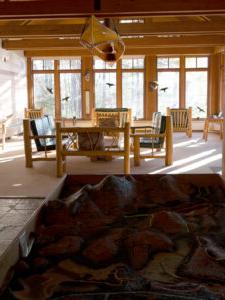

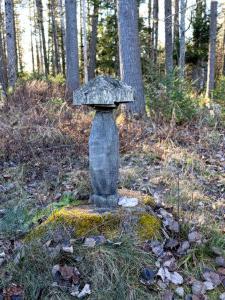




Paul Smith’s College Visitor Interpretive Center
8023 NY-30, Paul Smiths, NY 12970
518-327-6241

